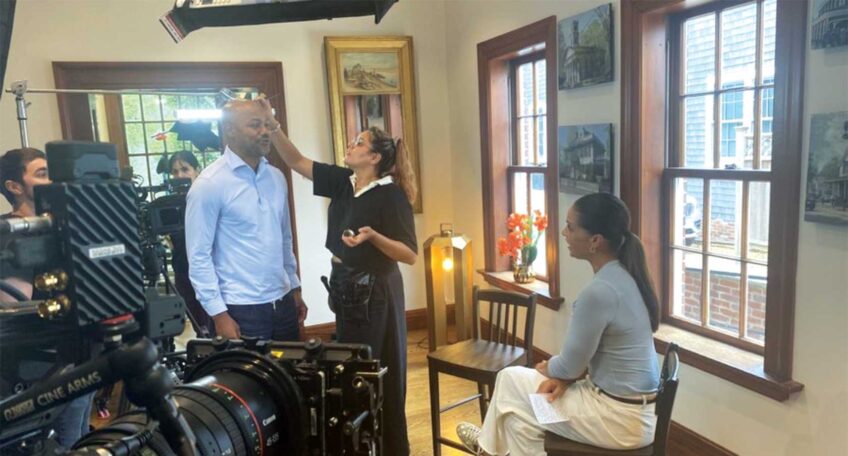Banner Business Sponsored by The Boston Foundation
If one of the greatest, most influential Black organizations of the past 100 years can fade into oblivion, how can others avoid that same fate?
That’s what happened to the Universal Negro Improvement Association, arguably the largest and most impactful Black organization in history. It once boasted a membership in the millions in the 1920s, with chapters on nearly every continent. And though the organization still exists in name, it is a shell of its former self.
But at least it’s a shell. There are countless other Black organizations and businesses that had huge impacts on Black people and Black life, yet they are now gone, existing only in the history books and the memories of elders.
Yet, some organizations have stood the test of time, existing over 100 years. What is their secret? What’s the difference? What do they have to teach today’s Black organizations and businesses that seek long-term staying power? Succession planning.
Importance
“You build up your company through blood, sweat, and tears. It’s a success. One day, however, you will need, or choose, to turn over the reins to someone else. Whether by simply appointing your successor or by selling the company outright, the transition to new leadership can be tricky, even painful,” wrote Business Consultant Frank Williamson in his article, “Why Succession Planning Is a Must for Black-Owned Businesses.”
Williamson’s words apply to organizations as well, including the Black Church.
Recently, Dr. Ralph Hughes and leadership subject matter expert Dr. Khandicia Randolph led an online conversation about the critical role of organizational succession planning, particularly within the Black church.
The conversation produced the usual takeaways from conversations and studies on the topic: Succession plans are crucial for organizations to ensure smooth leadership transitions and creating a leadership culture is key to meeting succession planning challenges.
It also pointed out that the Black church faces unique challenges in succession planning due to the cultural significance of the pastor’s role and the lack of preparation for leadership transitions. The resulting assignment: Make sure to address specific deficiencies within the church/organization to improve the chances of creating and successfully implementing a succession plan.
Real life examples
Locally, the NAACP Houston Branch seems to have created that “leadership culture” stressed by Hughes and Randolph.
NAACP Houston’s executive director, Yolanda Smith, applauds the national NAACP for its commitment to bringing on new leaders, pointing specifically to the organization’s ACT-SO program.
ACT-SO (Afro-Academic, Cultural, Technological and Scientific Olympics), informally called the “Olympics of the Mind,” is the NAACP’s youth program “designed to recruit, stimulate, improve and encourage high academic and cultural achievement among African American high school students.”
“It’s a 50-year-old program founded by legendary journalist Vernon Jarrett and has produced alums like Kanye West, Jada Pinkett Smith, Niecy Nash and Anthony Anderson who participated in ACT-SO in their youth and who regularly attend ACT-SO events currently,” said Smith, who connects ACT-SO activities with the NAACP’s commitment to succession planning.
“Our national and local offices train our youth to be new leaders. Our Houston Branch Youth Council is the number one youth council in the nation, winning the most awards of any unit. They are mini units of NAACP branches. They have their own president, VP, secretary, etc., all training to be the next leaders. That’s our succession plan,” Smith added.
Smith contends NAACP youth will be the next presidents and leaders because of ACT-SO, the youth unit configurations and the organization’s “robust mentorship program.”
“We have about 20 advocacy committees where all of the work of the NAACP is done. And the youth have their own advocacy committees and initiatives that they do, with mentors assisting them. They enlist judges to put on moot courts, head environmental justice initiatives, learning about STEM and entrepreneurship. Our youth are involved in various activities and areas where they’ll eventually become adult leaders,” shared Smith, who credits Avalina Holmes, the youth advisor and Summer Thompson, the co-advisor, for the success of local NAACP youth.
Smith counts NAACP youth as children “from birth to 21.” NAACP Houston has chapters on several Houston-area college campuses, including TSU, UH, Rice and Sam Houston State.
“Succession planning is vital for the longevity and sustainability of the Honey Brown Hope Foundation,” said Tammie Lang Campbell, the organization’s executive director since its inception in 1991. “While I’m not planning to retire anytime soon, succession planning is a strategic investment in protecting our organization’s legacy and ensuring that our community will continue to have access to the vital resources and support we offer.”
Campbell explained that the foundation’s plan is not about a pre-selection, but instead preparation for when she retires.
“We’re not just picking a successor — we’re preparing a leader who has been working with the organization since she was a teenager. She has the compassion and desire to serve others, which is a necessity for advocacy work. I am blessed and honored to be passing the torch to my daughter, Shar-day Campbell, upon my retirement. She has been involved with the Foundation since she was a teenager by not only addressing initiatives that align with the organization’s mission but honing her skills and designing initiatives that will take the organization to the next level for generations to come.”
This article was originally published on Defender Network






